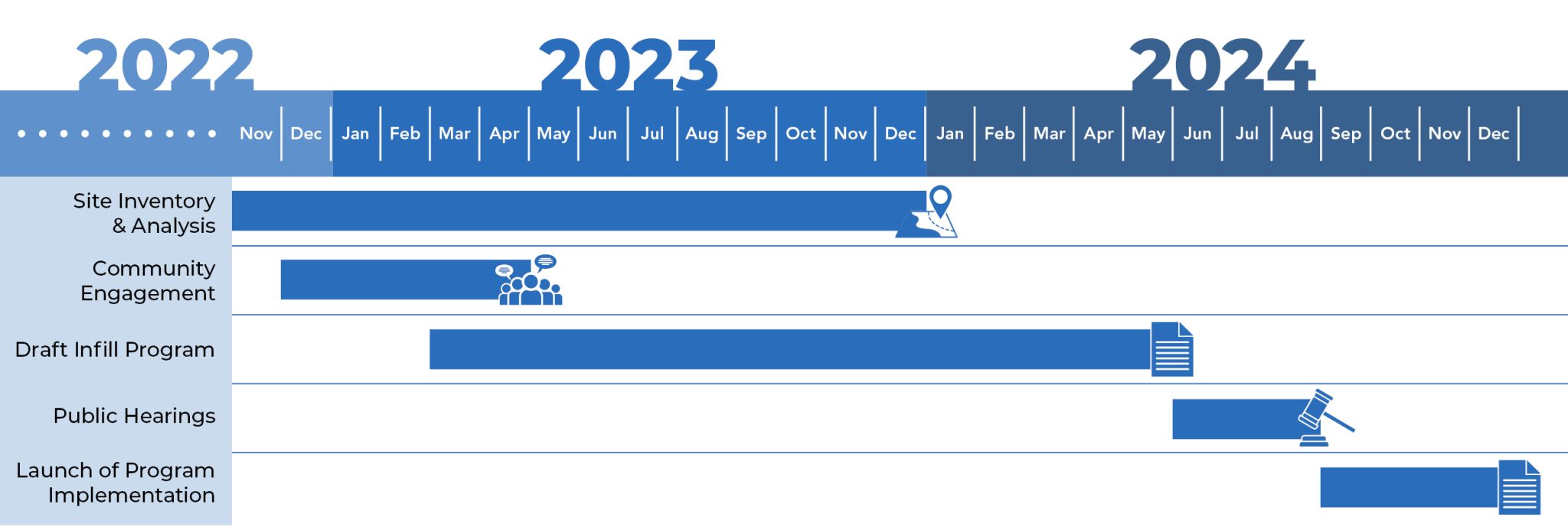Background
Sacramento County has long recognized the need for infill development to create more livable and walkable neighborhoods, increase resiliency and sustainability, provide new housing opportunities, support public and active forms of transportation, preserve undeveloped lands, and provide investment in existing communities. In 2021, Sacramento County was awarded a Local Early Action Planning (LEAP) grant to update the 2008 Infill Program with the goal of developing a strategy to increase and accelerate housing, identify constraints to infill development and identify solutions based on best practices, community feedback, and market research. On August 20, 2024, the Board of Supervisors adopted the Infill Program Update.

Overview
The Infill Program Update includes the following components:
- A summary of current barriers to infill development.
- An implementation plan containing 13 actions to respond to identified barriers.
- A summary of financial resources for infill housing development.
- A summary of infrastructure funding options to support infill development.
- An overview of best practices for infill development and incentives.
Next Steps
The Infill Program identifies the Infill Coordinator as the gatekeeper of the program tasked with its implementation. The recruitment for the Infill Coordinator position is currently in process. Further implementation of the program will commence upon the onboarding of the Infill Coordinator.
Project Documents
Supporting Background Documentation
Contact
For additional information on the Infill Program Update, please contact Joelle Inman at inmanj@saccounty.gov.
FAQs
“Infill" refers to the construction or redevelopment of buildings on vacant or underutilized lands such as underused parking lots or commercial spaces, located within an existing urban area. Through infill development, communities can create and expand existing local destinations by reactivating areas to better align with the community's needs. Infill is an alternative to urban sprawl, which expands development into undeveloped lands outside of urbanized areas.
It utilizes existing utility and transportation infrastructure.
It locates new housing near jobs, transit and services resulting in less vehicle miles traveled, cleaner air, and increased convenience for residents.
It can provide a mix of housing options with varying architectural styles and price points.
It fosters distinctive and attractive communities working to create a unique sense of place.
It contributes to cultural and economic vibrancy, and community activation leading to an increase in the perception of safety.
It facilitates healthy and environmentally friendly active transportation (e.g. biking and walking)
It helps protect agricultural land, sensitive habitat, and open space from being converted to new development.
It reduces costs to build and maintain infrastructure.
It reduces storm-water runoff, flooding, and pollution of waterways.
Stay In the Know
For updates on the happenings of the Infill Program Update Implementation, please subscribe to the Infill Program government delivery email blast at the below link
https://public.govdelivery.com/accounts/CASACRAM/subscriber/new?qsp
